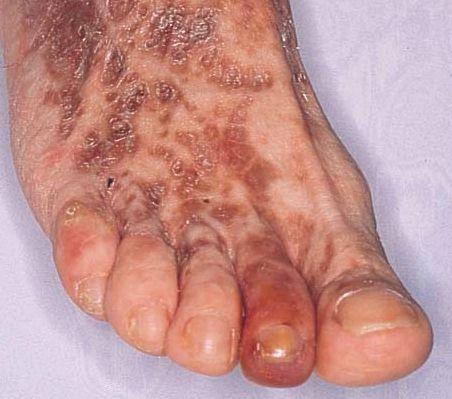Leptospirosis- Causes, Symptoms, and Treatments
Author: Shiela Lupiba
Shiela Lupiba
Category: Health
Tags: health, symptoms, animals, leptospirosis
Leptospirosis
Leptospirosis is a bacterium that causes sickness in both humans and animals. Bacteria belonging to the genus Leptospira are to blame. In humans, the illness can cause a variety of symptoms, some of which may be confused for those of other disorders. On the other hand, some infected people may show no signs or symptoms at all.
Also, if left untreated, Leptospirosis can result in kidney damage, meningitis (inflammation of the membrane around the brain and spinal cord), liver failure, breathing problems, and even death.
Causes
Leptospirosis causes by the bacteria Leptospira interrogans, which can be found in soil. The organism carries by a large number of animals and lives in their kidneys. It enters the environment via their urine and eventually ends up in soil and water.
If you come into contact with dirt or water where an infected animal has urinated, a virus can enter your body. Also, the virus can enter your body through skin holes such as scratches, open wounds, or dry areas. This pathogen can also enter your body via the nostrils, mouth, or genitals. Although it is difficult to catch the virus from another person, it can transmit through sex or nursing.
Spending a lot of time around animals or in the outdoors increases your chances of contracting the disease. Working in one of the jobs below increases your chances of being exposed to it:
- Farmers/Veterinarians
- In the underground, someone works (you work in a sewer or a mine)
- People who work at a slaughterhouse
- Members of the military
Moreover, you may also catch the sickness if you raft, swim, or camp near infected lakes or rivers.
As the name implies, leptospirosis is more common in hotter climates. Furthermore, despite the fact that the bacteria may be found all over the world, it is most common in Australia, Africa, Southeast Asia, Central and South America, and the Caribbean.
The bacteria that causes leptospirosis transfer by diseased animals’ urine, which can live for weeks or months in water or soil. The bacterium is found in many wild and domestic animals.
Some examples are:
- Wild animals
- Pigs
- Horses
- Dogs
- Rodents
Infected animals may show no signs of sickness. Also, it may continue to discharge bacteria into the environment for months or years.
Signs and Symptoms
In humans, Leptospirosis can manifest itself in a variety of ways, including the following symptoms:
- Fever that is extremely high
- Headache
- Chills
- Muscle aches and pains
- Vomiting
- Jaundice is a condition in which the body produces excessive amounts of yellow pigment (yellow skin and eyes)
- Eyes that are bloodshot
- Pain in the abdomen
- Diarrhea
- Image of a sick individual with a rash

Many of these signs and symptoms can be confusing for those of other illnesses. Moreover, some infected individuals may show no signs or symptoms at all.
An individual’s illness might occur anywhere between 2 days and 4 weeks after being exposed to an infected source of water.
Furthermore, fever and other symptoms are frequently present during the start of an illness. Leptospirosis can manifest itself in two stages:
- After the first phase (which includes symptoms such as fever, chills, headache, muscle pains, vomiting, and diarrhea), the patient may feel better for a short period of time before becoming unwell again.
- If a second phase happens, the situation becomes more serious; the person may suffer from renal or liver failure, as well as meningitis.
- The disease might persist anywhere from a few days to three weeks or more. Recovery may take several months if no therapy receives.
Signs and Symptoms in Pets
Leptospirosis symptoms are variable and nonspecific. Some pets show no signs. Dogs show common clinical symptoms. These are:
- Fever
- Vomiting
- tummy ache
- Diarrhea
- Severe weakness and depression
- Stiffness
- Muscle ache
- Inability to conceive
- Generally, younger animals suffer more than older animals.
Contact your veterinarian if you suspect your pet has Leptospirosis. Your vet can run tests to see if your pet has the condition.
Treatments
Antibiotics, such as doxycycline or penicillin, are used to treat leptospirosis, and they should be administered as soon as possible after the onset of the disease.
Also, it is possible that patients with more severe symptoms will require intravenous antibiotics. Individuals experiencing symptoms suggestive of leptospirosis should seek medical attention immediately.
Moreover, symptoms of kidney failure, meningitis, and lung issues are all in the report. It is possible that you will need to have antibiotics injected into your body, and in the most severe situations, the infection could cause organ damage.
In the event of a complication, treatment may differ. For example, the disease can extend throughout your body (systemic inflammatory syndrome) and cause internal bleeding as well as inflammation of your pancreas and gallbladder, among other complications. Following the spread of this infection, you or those in your immediate vicinity may notice changes in your speech or behavior.
Treatments in Pets
 treatment
treatment
If your veterinarian has diagnosed your pet with leptospirosis, the next steps depend on how you came into touch with your pet. Normal daily activities with your pet do not expose you to leptospirosis. High-risk contacts include:
- Contact with your pet’s urine, blood, or tissues during infection.
- Assisting an infected animal’s babies.
- Inform your veterinarian if you had these high-risk encounters with your pet during its infection. If you develop symptoms like fever, pains, or headaches within 3 weeks of a high-risk encounter, consult your doctor.
Antibiotics can cure leptospirosis. If an animal is treated early, it may recover faster and suffer less organ damage. Dialysis and hydration therapy requires.
There is a 5-14 day lag between exposure to bacteria and disease onset, although it can be shorter or longer.
Preventions
Keep away from infected animals, especially wild rats. Rats and other rodents are the main carriers of the bacteria. Even in the Western world, 20% of wild rats may have it. Be careful if you have to handle wild rats or come in contact with their habitats.
Also, in the developing world, farm animals are usually vaccinated, so there's much less risk. If an animal is ill, avoid bites and body fluids. The disease can't be passed through the air like a cold or the flu.
Be aware of your surroundings, especially when you travel. In countries with poor sanitation, leptospirosis is more common and may be hard to avoid. So, recognize the symptoms and seek help if you become ill.
Use disinfectant. Bleach, Lysol, acid solutions, and iodine are deadly to the bacteria. Keep them on hand to clean up.














